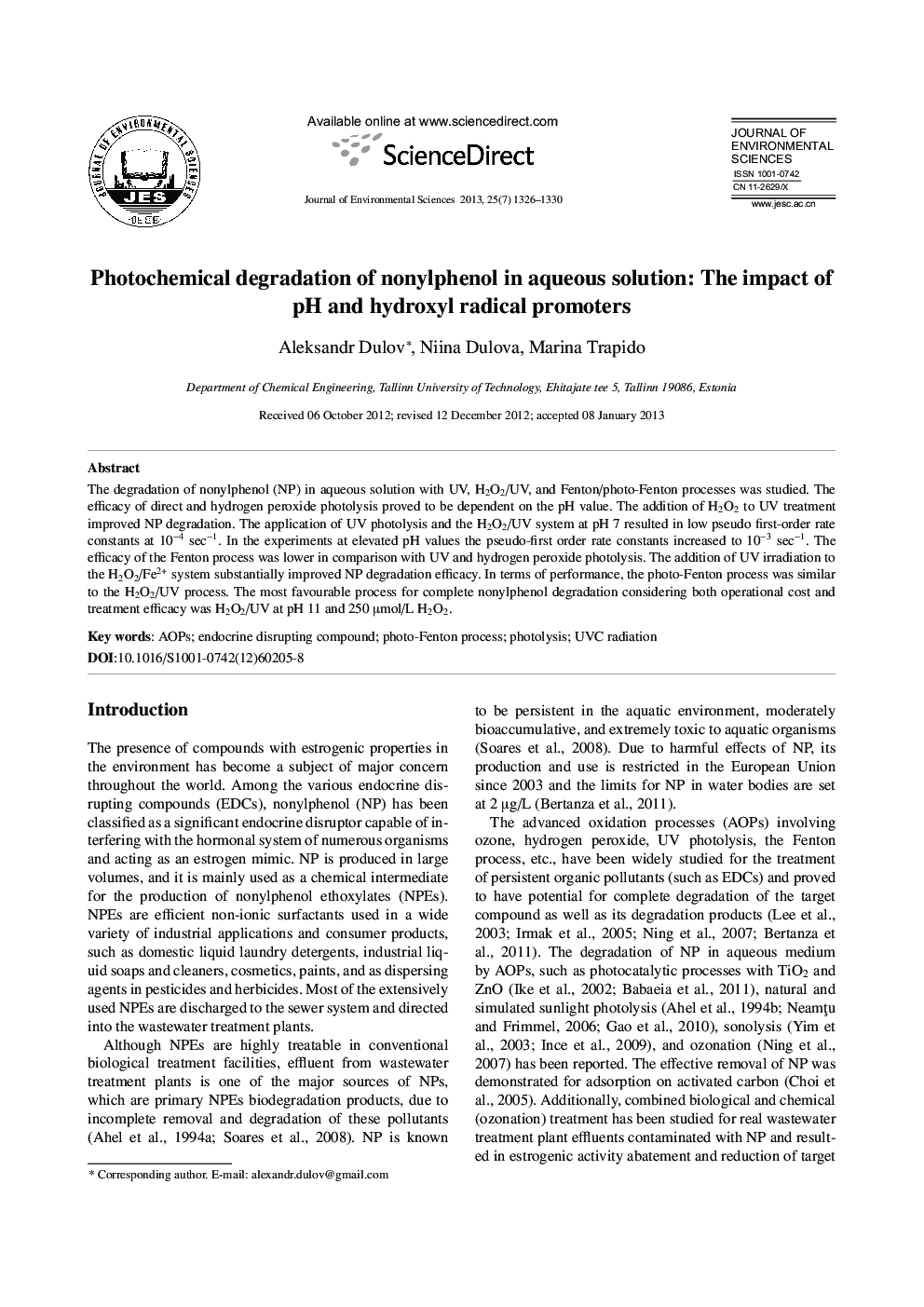| Article ID | Journal | Published Year | Pages | File Type |
|---|---|---|---|---|
| 4454842 | Journal of Environmental Sciences | 2013 | 5 Pages |
The degradation of nonylphenol (NP) in aqueous solution with UV, H2O2/UV, and Fenton/photo-Fenton processes was studied. The efficacy of direct and hydrogen peroxide photolysis proved to be dependent on the pH value. The addition of H2O2 to UV treatment improved NP degradation. The application of UV photolysis and the H2O2/UV system at pH 7 resulted in low pseudo first-order rate constants at 10−4 sec−1. In the experiments at elevated pH values the pseudo-first order rate constants increased to 10−3 sec−1. The efficacy of the Fenton process was lower in comparison with UV and hydrogen peroxide photolysis. The addition of UV irradiation to the H2O2/Fe2+ system substantially improved NP degradation efficacy. In terms of performance, the photo-Fenton process was similar to the H2O2/UV process. The most favourable process for complete nonylphenol degradation considering both operational cost and treatment efficacy was H2O2/UV at pH 11 and 250 μmol/L. H2O2.
